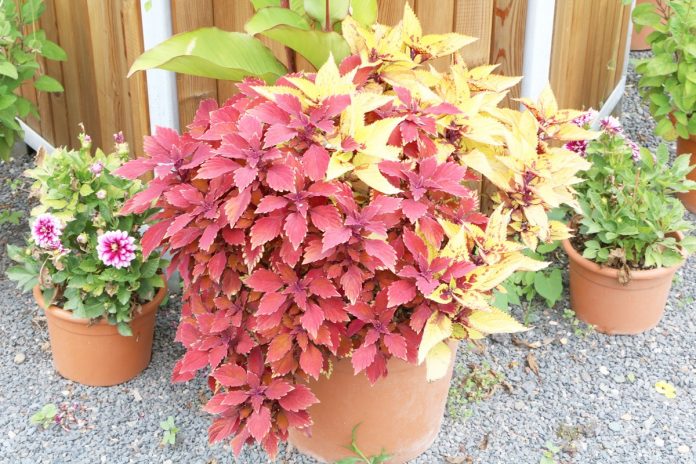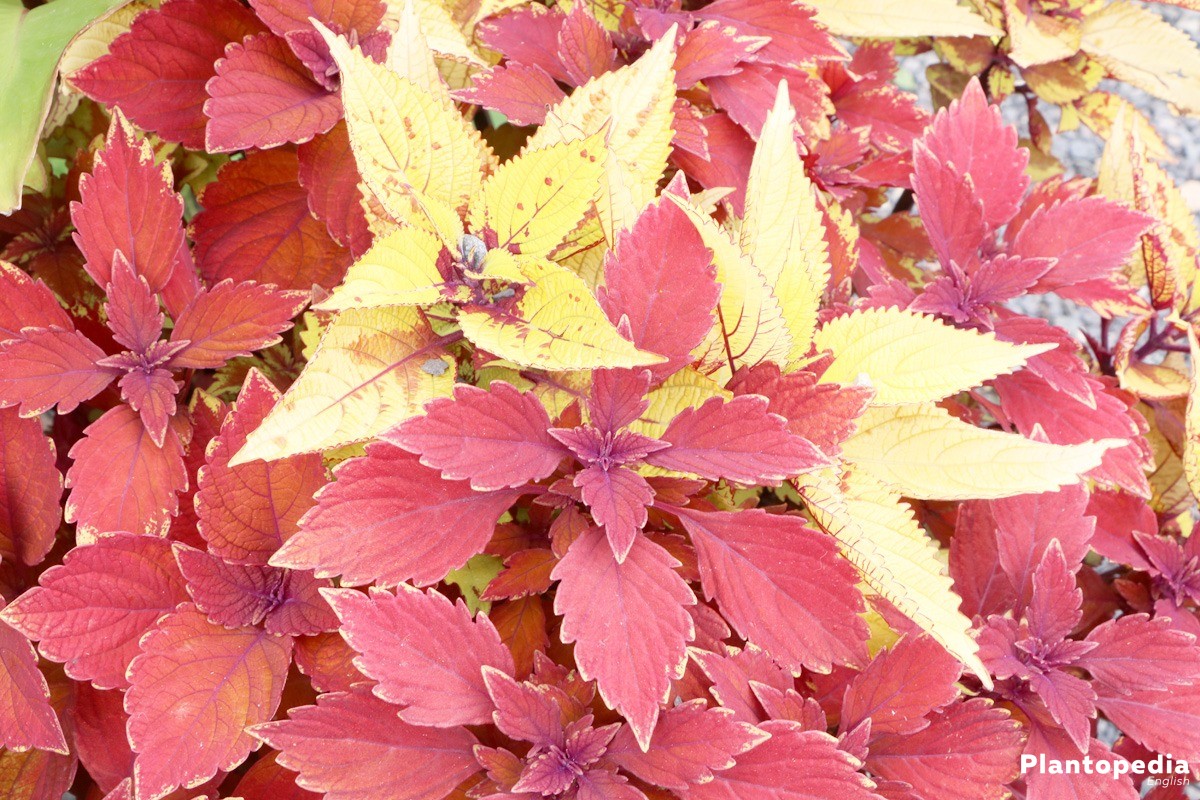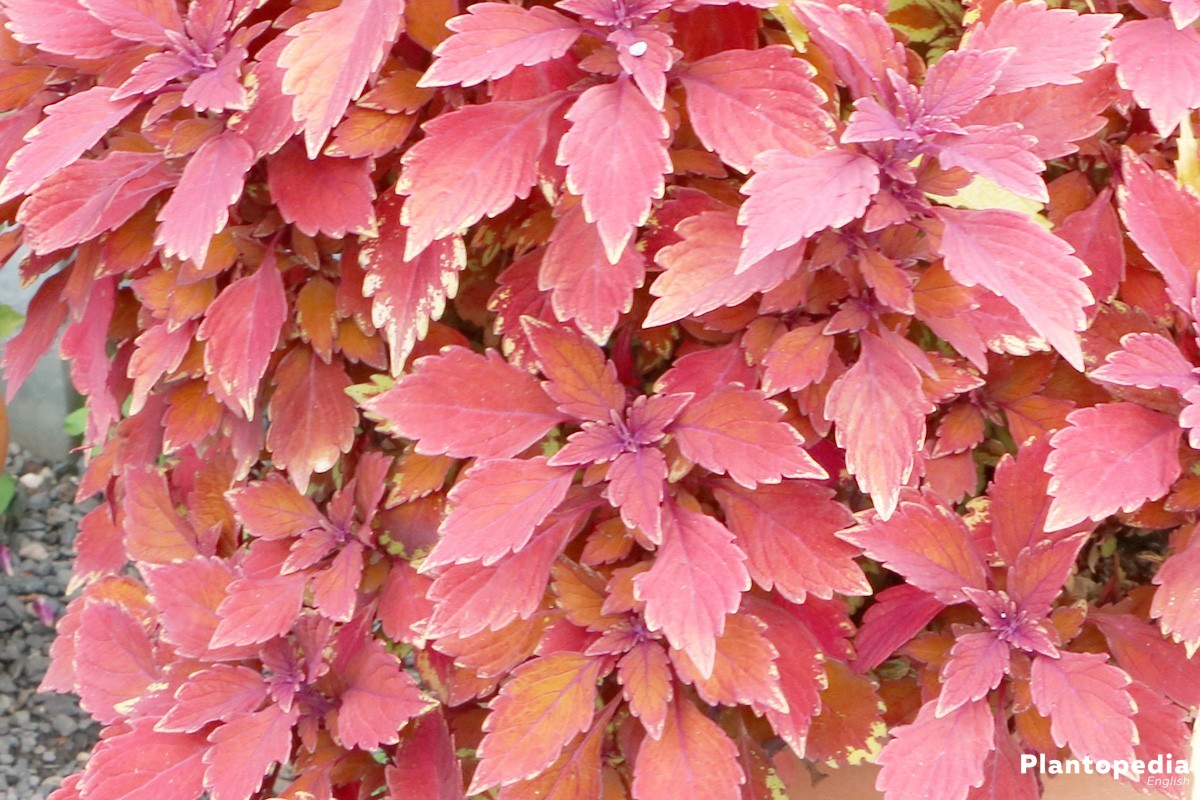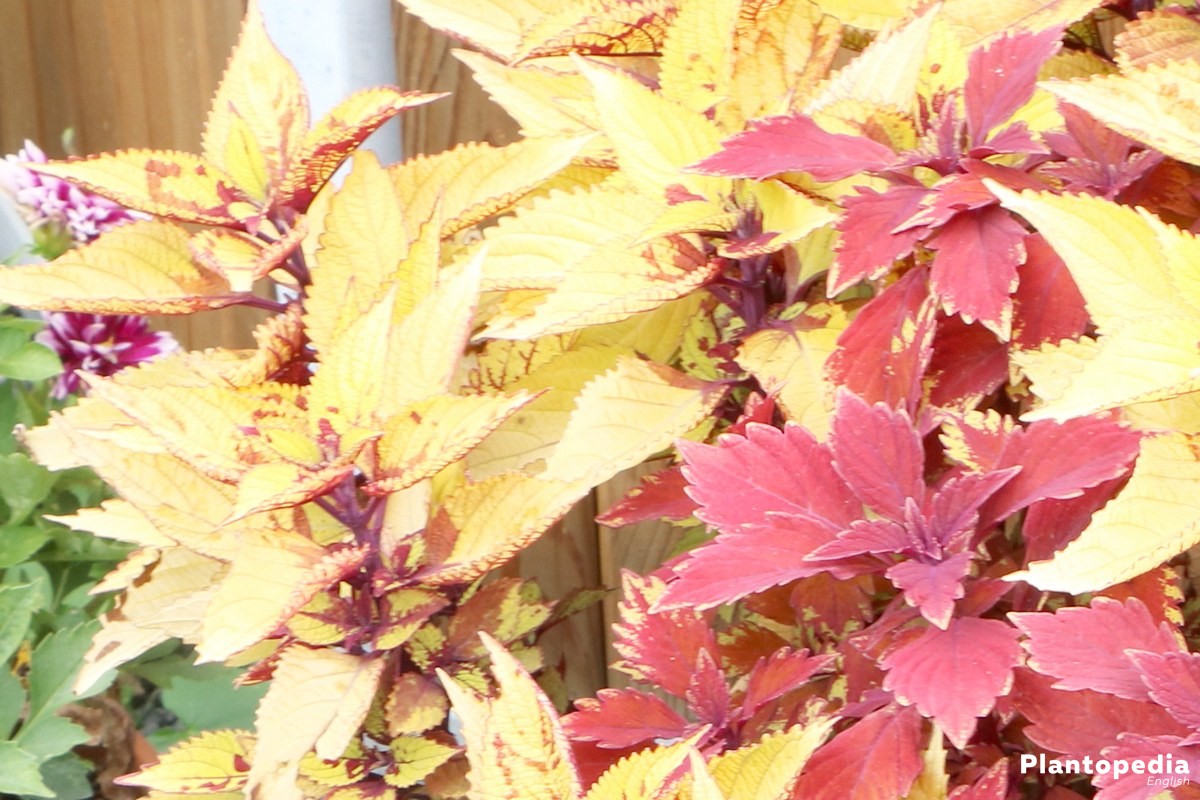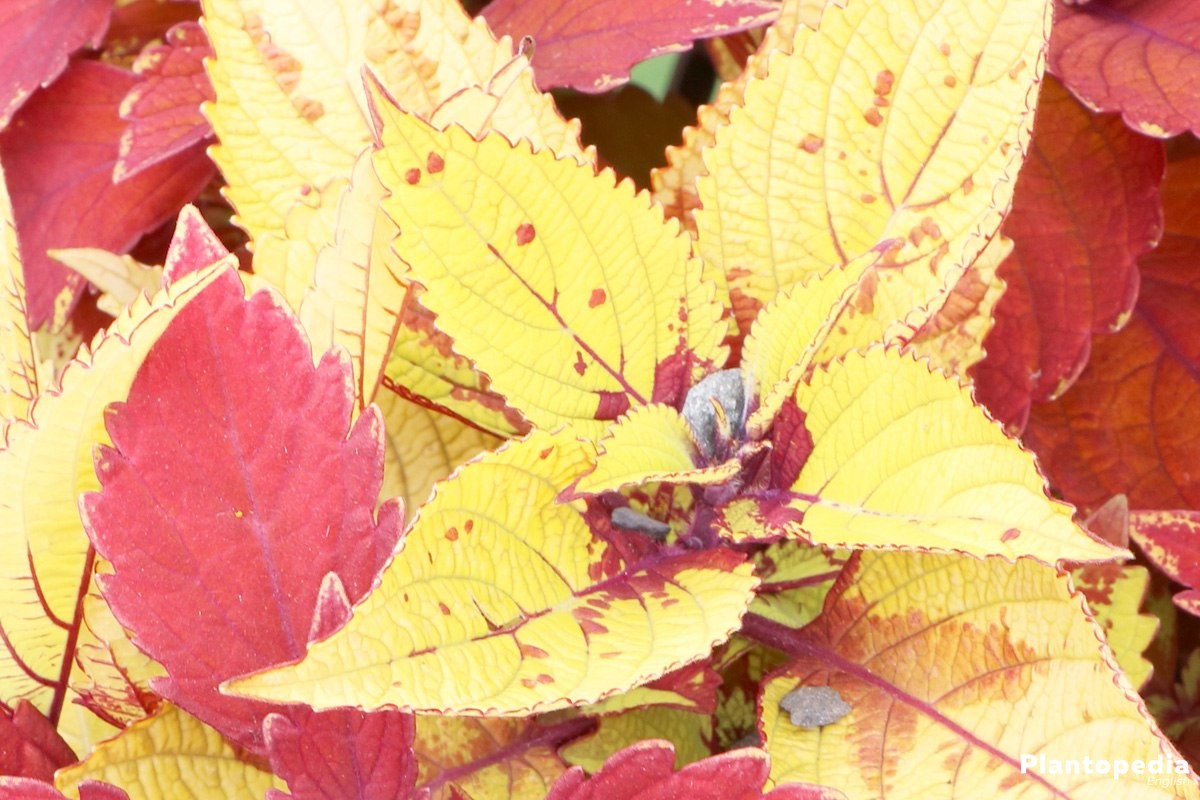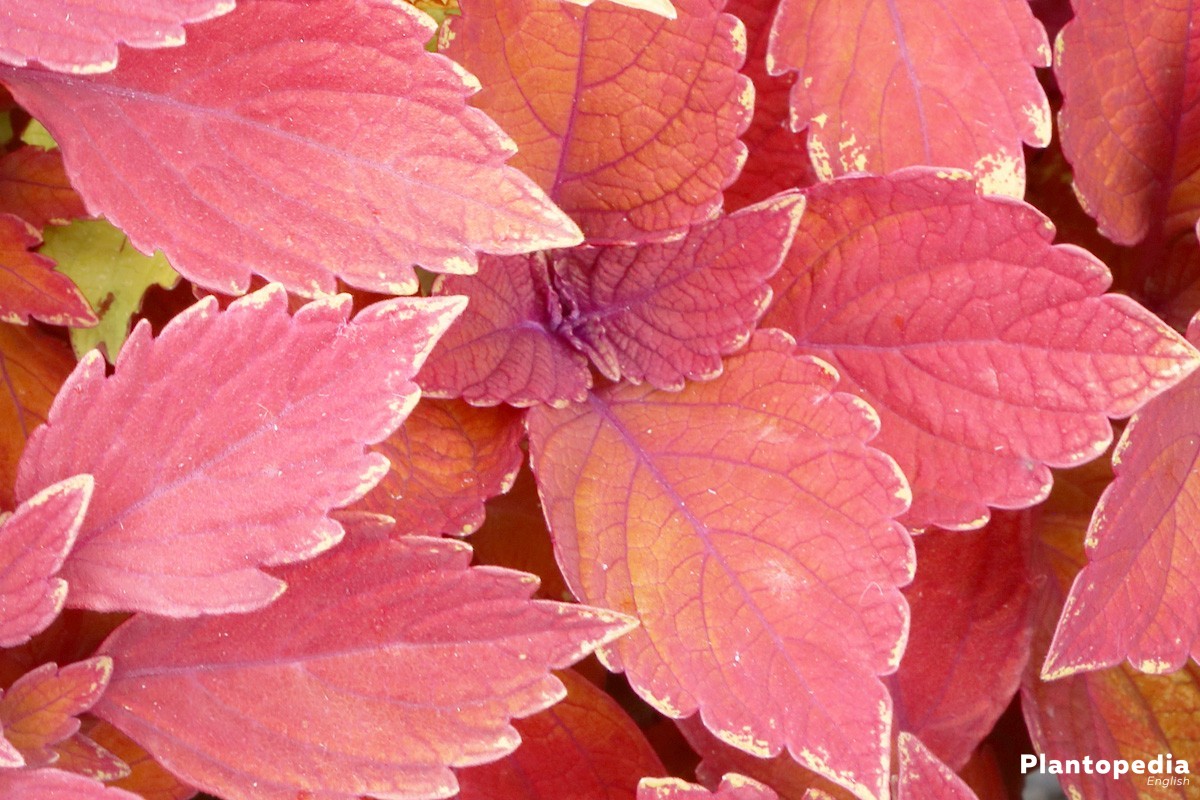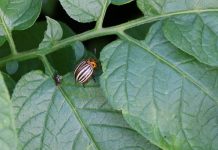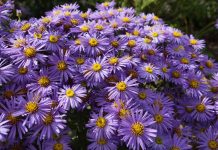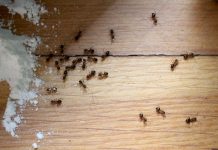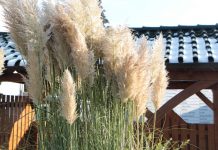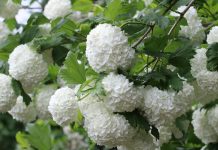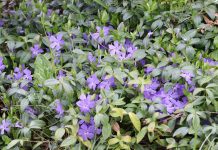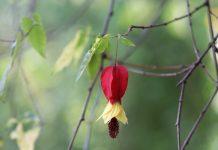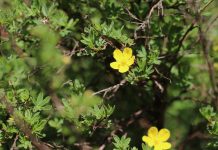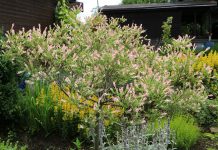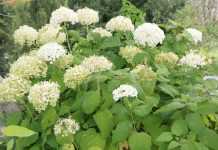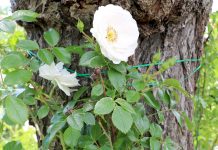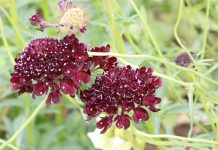Painted nettles (Solenostemon) have a spectacular foliage in colours and colour combinations no other plant species has to offer. The unique colour patterns of the leaves excite many gardeners. The plants are very easy to cultivate and can be cultivated not only as room plants, but also in pots or balcony boxes, hanging baskets or in a flower bed. This care guide will show you how to do everything right.
Plant Profile
Contents
- plant family: mint family (Lamiaceae)
- subfamily: Nepetoideae
- genus: Coleus (Solenostemon)
- species: painted nettle (Solenostemon scutellarioides)
- synonyms: Plectranthus scutellarioides, formerly Coleus blumei
- origin: Southeast Asia and Malaysia
- perennial, herbaceous plant
- stems lignify from the bottom
- height: 30 to 60 cm
- flowering period from June to October
- inconspicuous flower umbels with bluish flowers
- foliage plant
Painted nettles, Solenostemon are among the most magnificent foliage plants the plant kingdom has to offer. There are innumerable species of painted nettles, but only Solenostemon scutellarioides (formerly Coleus blumei) is cultivated as a room plant. Originally the painted nettles are from Southeast Asia.
Although painted nettles (Solenostemon) also form flowers, their true beauty is in the soft, velvety leaves, which vary in shape and colour depending on the sort or variety. The colour nuances range from green, red, brown, violet and yellow to pink as well as mixed variations of these colours.
Care
On closer examination, the painted nettle turns out to be an astonishingly unpretentious and robust plant that requires only few care measures. Anyone who heeds the following tips regarding the location and care of the colourful foliage plant will be very happy with the painted nettle.
Location
The painted nettle (Solenostemon) needs a very bright location, because only then the full colour splendor of it’s foliage can unfold. The location may also give direct sunlight, only during the noon hours a shade is recommended. If the painted nettle is in an all too dark spot, it quickly loses its strong, characteristic colour and the leaves become green. In addition, the plant grows sparingly without sufficient sunshine and begins to whiz away.
- light requirement: sunny
- if possible several hours of sun per day
- light deficiency leads to spindle growth and fading
Temperature
Solenostemon, Painted nettles are sensitive to cold and therefore require temperatures over 18 degrees all year round. For this reason, they are particularly suitable as houseplants, as long as no draughty spots are selected as a location. The plant can tolerate heat very well, but as soon as the temperature is 14 degrees or lower, it begins to fade. If the temperatures drop below 7 degrees, the painted nettle dies.
Soil condition and substrate
In order for the spectacular foliage plant to grow beautifully compact and bushy, it is dependent on a substrate that provides the powerful roots with water and nutrients. It doesn’t matter whether the plant is cultivated as an indoor plant or outdoors, it needs a substrate with the following properties.
- humus- and nutrient-rich
- good water storage capacity
- well permeable to air and water
- pH value: neutral or slightly acidic
Planting time
The painted nettle, Solenostemon is not winterhardy and it also can’t withstand cool temperatures without harm. Therefore, it should be planted in the open or on the balcony only after the Ice Saints (mid-May). Inside the house, planting is possible all year round. The best time is in spring.
Planting in a bed
Normally, painted nettles are kept as room plants. But generally, there is nothing wrong with cultivating the plant in the garden when it’s summer.
- planting distance: half height (20-30 cm)
- planting hole: double root ball size
- fill a few centimeters of sand or gravel onto the ground as a drainage
- plant as deep as before
- fill the hole with humus soil and some compost
- slightly press the soil
- slightly slur the soil with water
Planting in a pot
The painted nettle (Solenostemon scutellarioides) is usually cultivated in the house all year round. For this purpose it can easily be planted in a plastic or clay pot. It’s important that the pot has drainage holes at the bottom so that excess water can drain. As a substrate, any normal plant soil on a compost basis can be used. To ensure good permeability to water and air, it is advisable to use some sand or grit.
Repotting
Since a painted nettle requires sufficient space for the development of its roots, it’s okay when the pot is somewhat too large. It’s easy to see whether this foliage plant needs a larger pot, if it is carefully pulled out of the vessel. If the fine white roots are already visible on the edge of the ball, a larger pot is needed.
- repot young plants about every two months
- use vessels that are too large rather than such that are too small
Watering
Coleus blumei thrives best when the substrate is kept evenly moist. The rule is: Pour moderately but regularly. However, the substrate must never be too wet. The undemanding painted nettle does neither tolerate long lasting dryness nor waterlogging. The thumb test is always suitable for testing whether the plant needs to be watered. A few minutes after watering, excess water should be removed from the saucer or cachepot so that no waterlogging can develop.
If the substrate is too dry even for a short time, the leaves of the Solenostemon scutellarioides will collapse and drop off. And although the plant seems to recover completely when it is watered again, the lower leaves are likely to fall off. In the winter you should pure a little less, but the root ball must never dry out.
Fertilizing
If the Solenostemon is repotted annually or at least supplied with some fresh substrate, it does not need any additional fertilizer. Otherwise a flower fertilizer in liquid form can be administered with the water once a month from April to August. Long-term fertilizers in the form of fertilizer sticks are also suitable for nutrient supply, but these fertilizers should only be used in half dose.
From the end of August the fertilization is completely stopped over the winter.
For outdoor plants a small dose of compost or horn chips, which are mixed to the soil in spring, is sufficient until the end of the vegetation period, without having to fertilize again.
Cutting
In order to preserve the colour of the foliage, the flowers are soon removed. When it has been cultivated for several years, the painted nettle may become somewhat out of shape with increasing age. The plant can generally be thinned all year round or cut back as required. After a few days, it will reliably sprout again. The regular removing of the shoot tips promotes a bushy growth of the plant.
- time: all year round
- remove the shoot tips
- shorten too long or little leafy shoots
- always cut just above a pair of leaves
- perennial cultivation: cut in the late winter or early spring
- cut back to about a third of the original size
Fresh, soft shoots can be easily pinched with the fingernails. Lignified branches are cut with a sharp, clean scissor so that the plant is damaged as little as possible.
Wintering
This herbaceous plant comes from the year-round warm regions of Southeast Asia, therefore it reacts very sensitive to cool temperatures. If the temperature falls below 12 to 14 degrees Celsius, the painted nettle stops growing and may even get damaged.
The plant dies when the temperature is seven degrees or less. Therefore, the painted nettle is cultivated as a one-year-old plant when it is planted outdoors. As a room plant, it also easily overcomes the cold season, as long as it is bright and warm.
- remove outdoor plants after fading
- they can also remain in the ground and be submerged in the spring
- balcony plants must be wintered in the house
- place them in a light and warm spot (over 16 degrees)
- shorten two-thirds of the shoots
- keep the root ball slightly moist
- from the beginning of May it should slowly get used to the sun again
- during the day at warm temperatures it should get used to the open air again
- at night it must be brought back into the house until mid-May
Room plants are cultivated as usual during the winter. Between September and March no fertilizer must be administered, but the plant is only slightly less poured.
Multiplication
The simplest way of multiplying the painted nettle (Solenostemon) is by cuttings. However, it can also be grown from seeds. But if you prefer certain colours or shapes, the latter method is quite difficult, because most painted nettle seeds are available as mixtures. The own offspring from seeds does often strongly differ from the mother plant too.
Cuttings
Choose a healthy, powerful shoot that does not have any flowers. In addition, the shoot should not be too fresh, a multiplication with somewhat more robust shoots is more likely to succeed. The shoot should have at least two to three leaf pairs, which have a particularly characteristic colour.
Young, freshly rooted plants can overwinter better than older plants. That is why you are on the safe side if you start a multiplication by cuttings in autumn. If you have no place to winter all your balcony plants in the house, you can collect a few cuttings for the coming season. By the spring they will already have developed considerable plants, which can be planted in the open or in the balcony box after a short acclimatisation.
- time: early autumn
- length of the cuttings: about 10 cm
- choose a healthy, powerful shoot
- the shoot should have no flowers
- two to three leaf pairs
- remove the lower leaf pair
- substrate: cultivation soil, cactus compost, peat-sand mixture
- insert the cuttings two to three centimeters into the moist substrate
- no covering required
- alternatively put them in a glass with water
- location: bright, without direct exposure to the midday sun
- temperature: 20 to 24 degrees
When the roots are about five centimeters long the water-rooted cuttings are carefully planted into standard soil, which has been mixed with some sand. In the case of cuttings cultivated in substrate, the root formation can be recognized by the formation of new buds and leaves on the shoot. From now on, the painted nettle can be cultivated like a grown plant.
Seeds
Nettles can also be grown from seeds. This is, however, a rather lengthy matter, in contrast to the multiplication by cuttings. Growing certain colours and shapes from seeds is often unpredictable, just a matter of luck.
- time: spring
- mix seeds with some fine sand and plant them into a bowl
- substrate: sterile cultivation soil or cactus compost
- moisten the substrate
- spread the seed-sand mixture onto the substrate
- do not cover the seeds with substrate (they only germinate when exposed to light)
- place them in a miniature greenhouse
- alternatively cover them with a freezer bag
- germination temperature: at least 20 degrees
- light location (without direct sun)
- germination period: 14-21 days
- as soon as the first germinal leaves are formed, you should plant each one in a single pot
All varieties of the painted nettle, Solenostemon are very similar when they’re young plants. It is only after the fifth pair of leaves that the characteristic colouring appears.
Varieties
There is an almost infinite range of different hybrids of the painted nettle. Among the most popular specimens are:
‘Brillancy’
- carmine red foliage with yellow edge
‘Crimson Ruffles’
- dark violet and pink
‘Golden Bedder’
- golden yellow leaves
‘Fishnet Stocking’
- light yellow foliage with violet veining
‘Royal Scott’
- wine-red leaves with a light green edge
‘Ruffles Copper’
- reddish, strongly wavy foliage with green edge
‘Black Dragon’ (‘Schwarzer Drache’)
- dark purple foliage with reddish nuances
Diseases
Diseases are rather rare with this robust plant. If the painted nettle has health problems, the cause are usually care failures, such as a too wet or dry root ball or cold draught.
- leaf shedding: poor light conditions or dry root ball
- long, thin shoots: to dark location or shoot tips not regularly removed
Pests
European red mite
The European red mite tends to attack painted nettles. They will particularly frequently occur on plants which are cultivated very warmly and at low humidity (in winter above the heating). The European red mite is recognizable by a fine web on the leaves. Looking more closely, small yellow spots can be seen on the leaves. In cases of increased attack, the leaves become completely yellow and die.
Preventatively, trays with water can be placed next to the painted nettle in order to locally increase the humidity. Alternatively the plant can also be placed on a saucer filled with stones and water. In case of infestation, you should shower the plant with lukewarm water on a daily basis.
Mealybugs
In addition, mealybugs can be found on this coloured plant when it is weakened. These can be recognized by the wobbles, which are looking a lot like cotton balls. Prevention and control are the same as with the European red mite.

